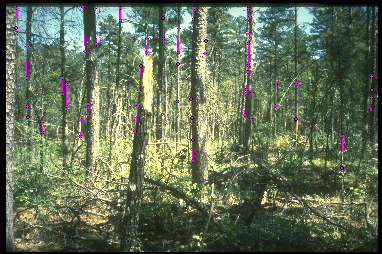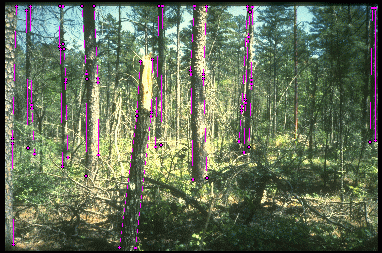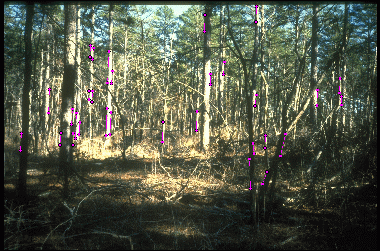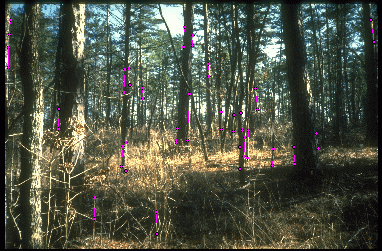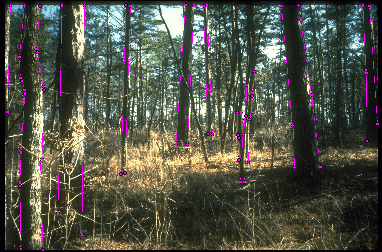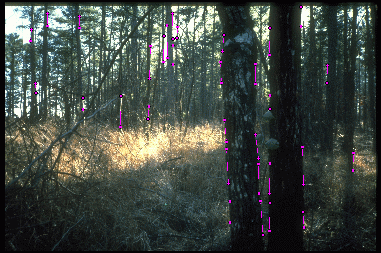To transcribe lines in an image, there are two possible schemes. In one scheme,
we label on a physical basis. That is, we only transcribe lines which are
physically in existence in the image. Whereas in the other scheme, we label
on a perceptual basis - we identify outlines of trunks. Even if some part
of a trunk is blocked by something else, we still mark it out because we
know by perception that there should be a line hiding behind the blocking
stuff. The first scheme fits common line detection algorithms better, which
can only detect actually existing lines. The latter is
more coherent to human perception, but it requires an intelligent line
detection algorithm, which is really a challenge. We did evaluation
experiments with both schemes on a small data set consisting of 10 images.
The evaluation results below show that the performance
of the edge and line detectors drops significantly with the second scheme.
This is reasonable because there are much more long reference lines in this
case while the line detector tends to output short lines, hence the rate of
mismatch in length increases drastically.
Evaluation Results
| Scheme |
Conditions |
Reference |
Detection |
Error(%) |
Insertion |
| Gaussian Variance |
High Threshold |
Low Threshold |
Line Threshold |
No Match |
Distance Mismatch |
Length Mismatch |
Slope Mismatch |
Total |
| 1 |
4 |
80 |
40 |
40 |
194 |
8514 |
3.1 |
11.9 |
58.8 |
0 |
73.7 |
8326 |
| 2 |
4 |
80 |
40 |
40 |
254 |
8514 |
0.8 |
19.3 |
76.4 |
0 |
96.5 |
8262 |
Example Transcriptions (click on the images for magnification)
